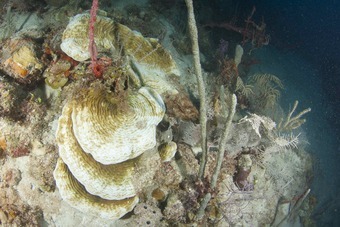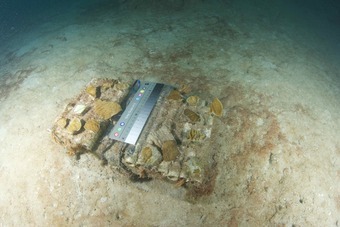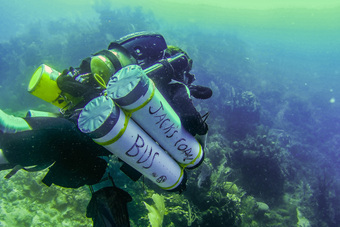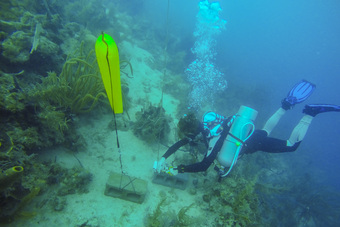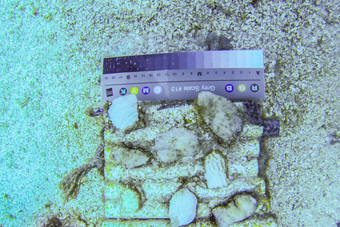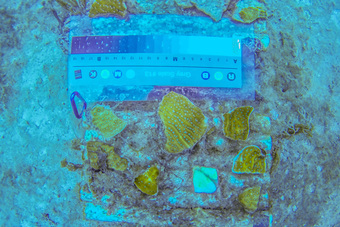Publications:
Laverick and Rogers 2018
Mesophotic Coral Ecosystems (MCEs) may act as a refuge for impacted shallow reefs as some of the stressors affecting tropical reefs attenuate with depth. A less impacted population at depth could provide recruits to recolonise shallow reefs. Recently, disturbance has been reported on several mesophotic reefs including storm damage, biological invasions, and coral bleaching; calling into question the extent of deep reef refuges. We report on a reciprocal transplant experiment between shallow and mesophotic reefs in the Caribbean, which occurred during a period of coral bleaching. 102 fragments of Agaricia lamarcki were collected down a continuous depth gradient at two sites to a maximum depth of 60m. Fragments were transplanted to either a shallow or mesophotic station at a third site, with controls. This allowed the disaggregation of the effect of the disturbance experienced during the observation period, and any potential acclimation resulting from the historical location of a fragment. Mortality and bleaching were quantitatively assessed. We found the relocation depth of a coral fragment had the strongest effect on both survival and the degree of bleaching recorded. The site a fragment was collected from, and the original collection depth, failed to explain mortality or bleaching with statistical significance. This experiment provides support for the assumption that mesophotic corals may be protected in comparison to shallow reefs, in spite of the potential effects of differing susceptibilities to stress.
10- 60 m
Mesophotic “mentions”
44 x (total of 3913 words)
Classification
* Presents original data
* Focused on 'mesophotic' depth range
* Focused on 'mesophotic coral ecosystem'
Fields
Climate Change
Disturbances
Management and Conservation
Focusgroups
Scleractinia (Hard Corals)
Locations
Honduras - Bay Islands
Platforms
Rebreather


